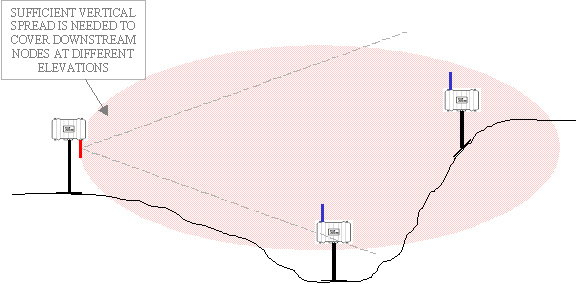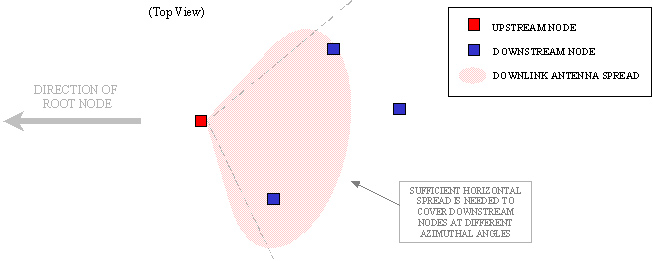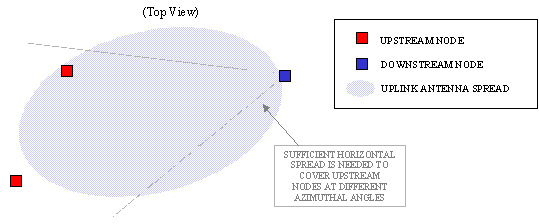|
||
|
Choosing the appropriate antenna for a particular radio on a mesh node involves the consideration of two factors:
frequency on which the antenna will be operating, and spatial distribution of nodes/clients with which the radio will be
communicating. The AP radios on the MD4000 use the 802.11b/g protocol which uses the 2.4GHz frequency. The backhaul radios on the MD4000 use the
range from 5.2GHz to 5.9GHz. Most antennas rated for "5GHz" do not cover the
lower part of the 5GHz spectrum.
Note: The 5G backhaul antennas used must cover the range (5.250 GHz - 5.8250 GHz). Superpass Antennas cover this range. The effectiveness with which a backhaul radio communicates with other backhaul radios involves three parameters: node-to-node distance, vertical spread of distributed nodes, and azimuth spread of other mesh nodes. An large none-to-node distance mandates the use of higher-gain antennas. Higher-gain antenna increases the EIRP, and it decreases the spread of the signal beam. But this makes the antenna is more difficult to aim accurately, especially over large distances.  If a directed beam misses the node which it is intended to communicate, a link with the node will not form. In some terrain there is a vertical spread of mesh nodes (as opposed to all nodes being on flat ground). In these cases, the vertical spread of the selected antenna must accommodate this distribution. This is illustrated below.  The "azimuthal spread" of distributed downstream nodes (relative to the upstream node) is not always 360 degrees. Typically, the downstream nodes are away from the upstream node (illustrated below).  Sectored antennas have a more focused beam and therefore more range than an omni directional antenna. If a sector antenna is used on a downlink radio, select the azimuth angle of the antenna to be slightly larger than the azimuthal angle of the nearby downstream nodes. This ensures redundant pathways and improves the reliability of the mesh network. 
|
||